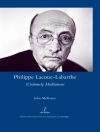The main aim of the work is to present emblematics in Hungary in its European context, and to show the reciprocal influence between that phenomenon and mainstream literature. The description of the theoretical and historical development in Hungary is supplemented by a series of case studies examining the effect of emblematics upon various literary genres. The final chapter analyzes the link between literary emblematics and the visual arts by looking at a specific example. As in most European countries, emblematics in Hungary is part of a complex labyrinth of literary modes of thought and expression. A relative poverty of theoretical writing went hand in hand with a considerable range of emblematic practice. The emblem proved to be a transitional form between the period when signs and motifs were regarded as having specific and fixed meanings and the modern period when we have developed a different and shifting concept of language and meaning. At the same time as emblems began to penetrate the more popular levels of national culture and literature, they also became more specialized. Hungarian emblematics used, for the most part, existing pictorial and textual combinations of pictures and texts. They employed the emblem notably in genres and texts of the genus demonstrativum, which referred to matters which were topical at the time.
Éva Knapp & Gábor Tüskés
Emblematics in Hungary [PDF ebook]
A Study of the History of Symbolic Representation in Renaissance and Baroque Literature
Emblematics in Hungary [PDF ebook]
A Study of the History of Symbolic Representation in Renaissance and Baroque Literature
Cumpărați această carte electronică și primiți încă 1 GRATUIT!
Limba Engleză ● Format PDF ● Pagini 322 ● ISBN 9783110950823 ● Mărime fișier 21.3 MB ● Editura De Gruyter ● Oraș Tübingen ● Publicat 2012 ● Ediție 1 ● Descărcabil 24 luni ● Valută EUR ● ID 6362260 ● Protecție împotriva copiilor Adobe DRM
Necesită un cititor de ebook capabil de DRM












